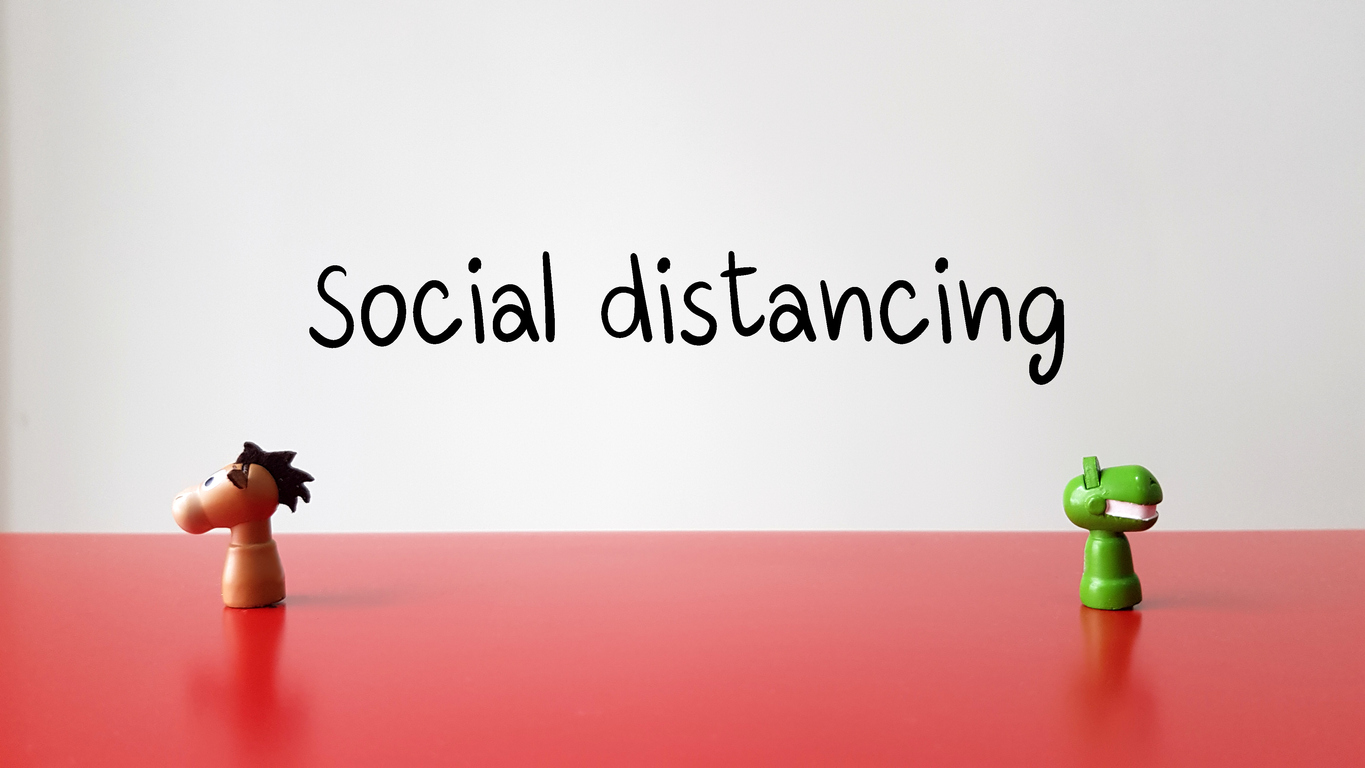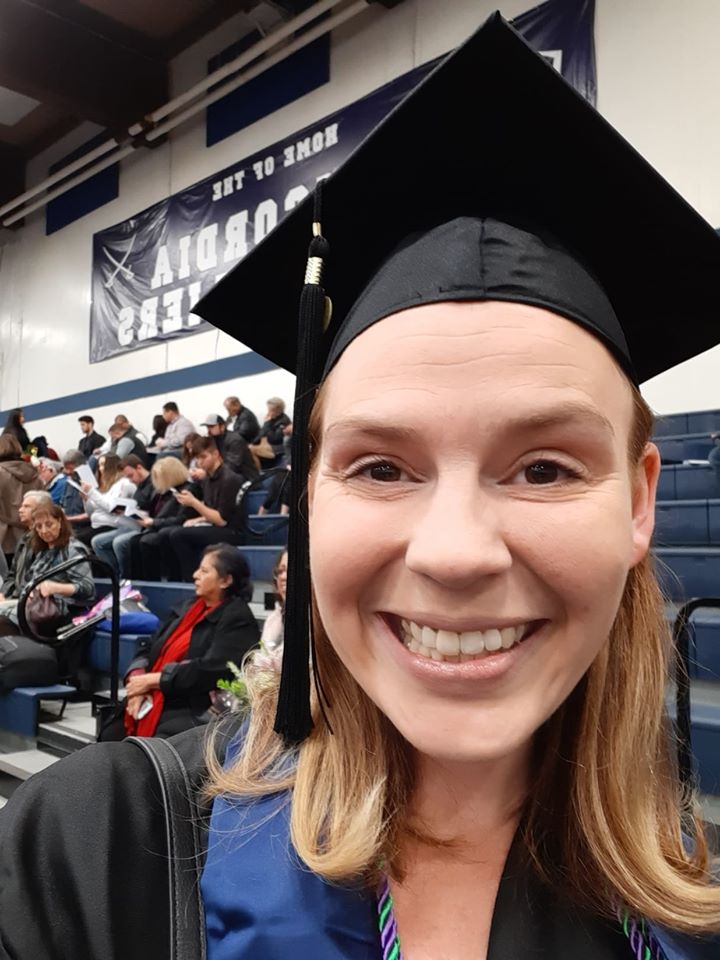
Recently, we went to our first “social event.” Our kiddos’ cousin was celebrating her 8th birthday. We had been home since mid-March besides grocery runs and neighborhood walks. We repeated the same warnings over and over to our kids: “Do NOT touch anyone!”, “Hands to self!”, “We don’t want to pass germs, or get germs”, and “Stay 6 feet away from everyone.” Our kids are only 5 and 7 years old, but they seemed to understand. We pulled up to the birthday party and there were about ten kids there. The kids were wrapped up in hugs from others in a matter of minutes. While being embraced in a hug, my daughter looked at me helplessly over a family member’s shoulder as if to say, “Sorry mom! What am I supposed to do?” I understood, although I continued to worry. Aside from hugs, kids were grabbing each other’s hands to pull each other in different directions, they were having “dance parties” way too close to each other, and they were passing toys and candy back and forth. We tried to tell them to stop several times, and eventually gave up. I felt truly awful when our kids continuously apologized after we left the party. “How can I even ask them to do this?” I was thinking.
A passage from an article I read recently: “Covid 19- Social Distancing with Young Children” (thehospitalist.org, 2020), summed up my thoughts on kids and social distancing perfectly, “Everyone who has observed young children knows that social distancing is not in their nature” (Miller, 2020).
We thought we were prepared for the party by bringing masks and hand sanitizer, asking the kids to keep their hands to themselves, and asking our family members to social distance: but we underestimated the natural urges of kids to reach out and touch each other. This experience increased my concern about school in the fall. How on Earth are these kids going to be able to follow social distancing guidelines? Schools can set up environments with seating that is “spaced out,” give kids their own materials to use, and sanitize regularly—but it only takes a second for one kid to run up to another and hug them/touch them. We certainly cannot expect teachers and school staff to prevent all these instances from happening. The best prevention strategy we have is to teach our kids at home about the importance of social distancing. Even then, kids will likely go against our advice and touch a buddy at some point. My suggestions are 1) lead by example by modeling social distancing actions 2) explain social distancing in a way that kids will understand 3) teach them about rules their schools may have and that your county/city/state have in place, including their favorite places around town.
Modeling Social Distancing-
Wear a mask whenever you are outside your home. Bring gloves and/or hand sanitizer. Only go out for medical necessities, groceries, etc. If you go out for exercise or a walk: try to go places that are empty or with minimal people around. When someone who is a non-family member comes to your home, keep six feet away from them. My husband is a contractor who has several employees. We model social distancing by staying six feet away from them when they come to our house to deal with payment matters, gather tools from the shop, or perform other business duties. We ask them to use masks if they are outside in the backyard at the same time as our kids. We also have the kids have masks when they are both in the front/backyard. We have told the kiddos, “We don’t want to give them any germs, and we don’t want them to give us any germs. There is something called being asymptomatic. That means you can be sick without knowing that you are sick.” We explain that we have been to the grocery store and on walks, and the “worker guys” have been out around town doing work, so we can pass each other germs on accident if we get too close to each other. When we see our family members who live outside of our home 1) we use masks 2) social distance, and sadly: 3) we still aren’t hugging others. The kids know that their grandparents are in the “at-risk” group, because they are over 65, so that helps them to understand why we are staying far away from each other. It is devastating not to hug family, but we know it would be more devastating if any of us accidentally infected each other.
Explaining social distancing in a way that is relatable to kids-
Some of the kids channels we watch have helped me greatly with this. The “Kids Together: Nickelodeon Town Hall” special was extremely helpful to us. It was hosted by Kristin Bell (Ana from “Frozen/Frozen 2”). The kids were much more receptive to familiar TV characters/cartoon characters talking about the coronavirus than us boring old parents talking about it. Although it has already aired on Nickelodeon, you can find it on YouTube. Here is the link: https://www.youtube.com/watch?v=OAhfsC73JgM
Another good TV example was the Sesame Street special on coronavirus. This one was kind of long at over one hour and a half, but it features a good variety of Sesame Street characters discussing the virus with CNN anchors. Here is the link: https://www.youtube.com/watch?v=1dwV6NWYxwI
An article I read this week (nytimes.com, 2020) recommended a kid’s game relating to the coronavirus called, “Can You Save The World?” I clicked on the link and played it. The game is relatively simple and has good intent. The kiddos use cursors to 1) move around people coming their way 2) collect masks 3) avoid sneezes and 4) distribute masks to others. Some kids may get bored with it quickly, but it would be good to suggest trying it anyways. My kids love it! Here is the link: https://martin-jacob.itch.io/can-you-save-the-world
The other way that we explain important coronavirus information is by relaying visuals to them. We explain that six feet would look like “dad laying down on the floor.” So, we tell them to imagine standing far enough away from someone so that “dad could lay between the two of them.” We also explain the need for disinfecting items when we bring home something by showing them the different materials and explaining how long the virus can live on each one. They see us regularly disinfect our grocery packaging. We also wash hands the second we get home from anywhere. We explain that by cleaning and disinfecting things, we are taking away any virus that may be lingering on something that we have touched or brought home.
Teaching kids about what coronavirus rules exist in familiar locations-
Every time we drive by a playground, our family collectively sighs with sadness. We know that since March, playgrounds are off limits to us. It is helpful to us as parents that the rules are posted right there at the playground to explain that due to Covid-19, playgrounds are temporarily closed. The signs make it easy for my kids to understand. It also lets them know that these decisions are not their parents’ decisions; it is the state of Oregon that decides these matters. Our other favorite place is the mall: Lloyd Center. My kids and I understand that the virus is the reason that the mall is closed. We have told our kiddos about phase 1, 2, and 3 and which of our favorite locations will open with each one. We check the news on re-opening regularly as a family. Recently, we went to Seaside. We were thrilled to see many things were open, but we were still extremely cautious about touching things inside of places. We also didn’t go inside too many places. Some businesses seemed to be more proactive than others about safety guidelines and sanitation. Many of the businesses had space markers on the floors, hand sanitizer available, and notices of their coronavirus safety guidelines. We were too scared to do the arcade, but we were impressed to see a sign that said, “ask an employee to sanitize a machine before you play.” Businesses are really trying, but I think the fear customers have might linger for a while, even when things seem to be getting better. We will continue to watch the re-openings in Portland and proceed with caution. We are also looking forward to getting information from the kids’ school to see what classrooms will look like next year with covid-19 precautions.
***
The best things we can do to teach kiddos about the importance of social distancing is to 1) teach them what social distancing looks like in a variety of scenarios 2) explain how the virus can be transferred, even if others don’t seem sick 3) explain that clean hands and less touching can slow down the spread of a virus 4) explain how they can politely ask friends/peers/adults to give them six feet of space by social distancing. Kiddos do not get enough credit about what they will understand. Although sometimes kids will ignore the social distancing rules, they will likely understand them if they are relayed on a kid-friendly level. We can only hope that our kids will remember the importance of social distancing and that they are cautious when they are not in our care. Best of luck to you all in encouraging social distancing with your kids.
REFERENCES

Stephanie McCoy was born and raised in Portland, Oregon-where she still lives. She recently graduated with a Master’s in Education degree from Concordia University. In her free time: she likes to read and write, get outdoors, embrace her kiddos and husband, and watch travel documentaries.
